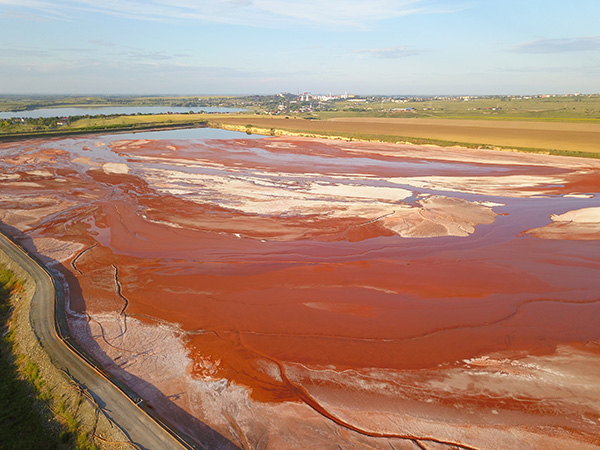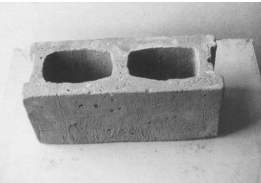A Bright Future For Red Mud
Aluminium. Practical, affordable and utilised globally - from kitchen foil to Tesla Roadsters and aircraft. This highly valuable metal is extracted from ore, leaving the end product to be a durable metal familiar to many. However, during the production of aluminium another product is left behind; this is known as red mud or bauxite residue. Red mud is currently stored in large waste ponds or dried mounds, making it one of the most plentiful industrial wastes on the planet. Globally, there are roughly 3 billion tonnes of red mud going to waste and this figure is only climbing, with aluminium plants generating a further 150 million tonnes each year.
While piling the red mud in a landfill or waste dam may be perceived as a cheap and simple solution, the cost on the environment and human health are far greater.

Aerial view of a red mud waste reservoir
The mix of metal, toxic gasses and radioactive earth elements deem the current storage of red mud unsustainable and, in some cases, dangerous. In 2010, one waste pond in Hungary gave way, allowing for a 2-metre-high wall of red mud to flood the town of Ajka. This killed 10 people and also resulted in an additional 150 people suffering from chemical burns.
Consumer and corporate demand for aluminium continue to increase and while aluminium is one of the most commonly recycled materials, there is a need to incorporate circular economy principles from the materials mining phase through to the materials end-use product.
Naturally rich in iron-oxide, red mud can be used beneficially as another alternative to cement. Research from Curtin University shows red mud blocks can also be stabilised with other binders such as ordinary Portland cement (OPC), pozzolanic cement or even geopolymers, contributing to more sustainable housing and construction solutions.

Red mud pozzolanic cement block source: Curtin University
One company that uses red mud to its full potential is Alcoa. Largely based in Australia, Alcoa is one of the largest producers of aluminium who can use red mud to its advantage by pumping CO2 into the mixture. Combining red mud with CO2 creates a mild acid that reacts to alkaline waste, forming carbonate materials that transform the mud into a red sand that can then be used to level roadbeds. In turn, preventing CO2 from entering the atmosphere. Alcoa estimates that the red mud from a single refinery can capture up to 70,000 tonnes of CO2 per annum, which equates to taking more than 15,000 cars off the road.
Giving new life to red mud plays an important role in the circular economy to reduce the environmental impacts associated with aluminium production while contributing to sustainable building initiatives.
